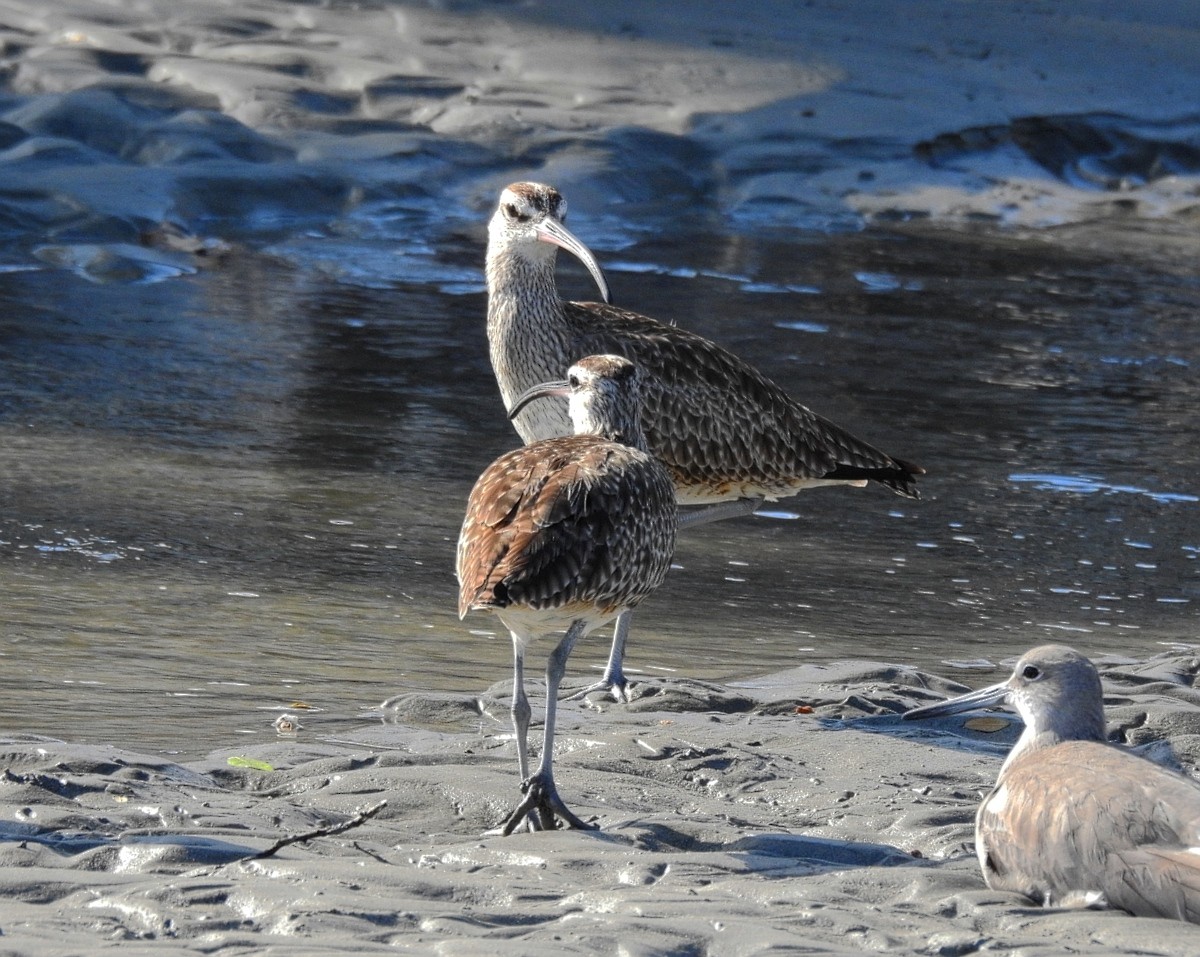Hudsonian Whimbrel
A species of Curlews, Also known as Hudsonian Curlew Scientific name : Numenius hudsonicus Genus : Curlews
Hudsonian Whimbrel, A species of Curlews
Also known as:
Hudsonian Curlew
Botanical name: Numenius hudsonicus
Genus: Curlews
Content
Description General Info
Description
This is a fairly large wader though mid-sized as a member of the curlew genus. The English name is imitative of the bird's call. The genus name Numenius is from Ancient Greek noumenios, a bird mentioned by Hesychius. It is associated with the curlews because it appears to be derived from neos, "new" and mene "moon", referring to the crescent-shaped bill. It is 37–47 cm (15–19 in) in length, 75–90 cm (30–35 in) in wingspan, and 270–493 g (9.5–17.4 oz; 0.595–1.087 lb) in weight. It is mainly greyish brown, with a white back, and a long curved bill (longest in the adult female) with a kink rather than a smooth curve. It is generally wary. The usual call is a rippling whistle, prolonged into a trill for the song. The only similar common species over most of this bird's range are larger curlews. The whimbrel is smaller, has a shorter, decurved bill and has a central crown stripe and strong supercilia. 
Size
37 - 47 cm
Nest Placement
Ground
Feeding Habits
Hudsonian Whimbrel preys on small invertebrates and crabs, also consuming berries. Its foraging strategy includes probing mud with a long bill, adapted to detect prey beneath. It feeds primarily at low tide, capitalizing on exposed food sources.
Habitat
Mangroves of Colombia, whimbrel roost sites are located in close proximity to feeding territories, away from potential sources of mainland predators, bot away from areas of human disturbance
Dite type
Aquatic invertebrate eater
General Info
Feeding Habits
Bird food type
Scientific Classification
Phylum
Chordates Class
Birds Order
Shorebirds Family
Sandpipers Genus
Curlews Species
Hudsonian Whimbrel 